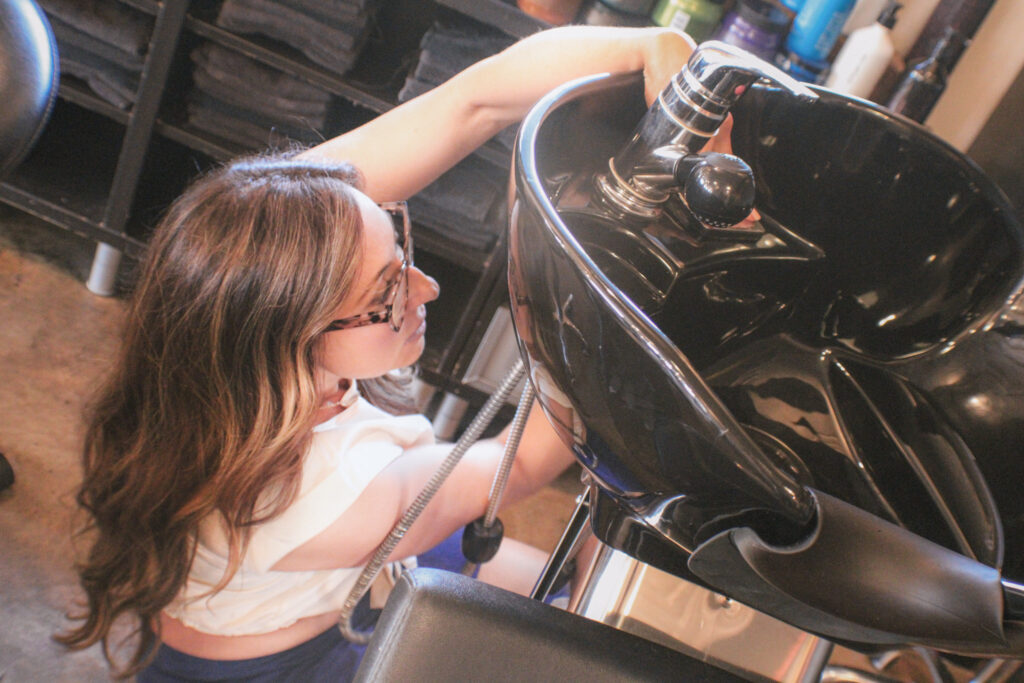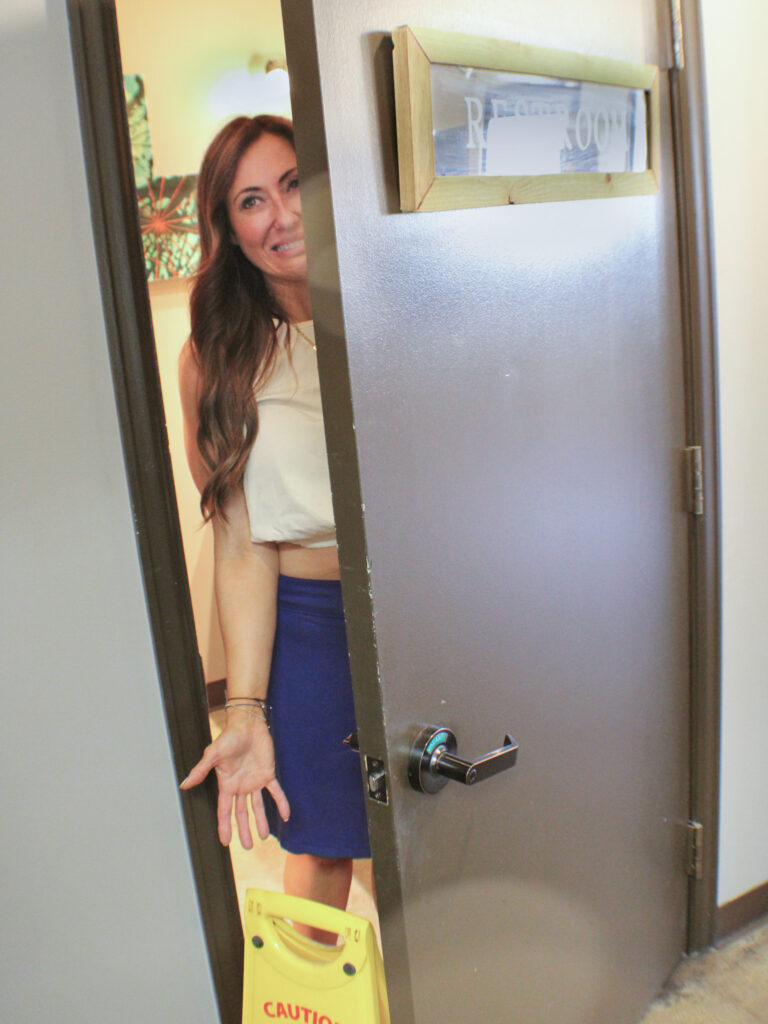Oh, the controversial practice of tipping. Who do you tip? How much do you tip? Why do you tip? It seems like nobody ever has all these answers, but if the question is, “Do you tip the salon owner?” Sonia Nordmeyer has one. She understands there’s a lot of fatigue around the subject, and the answer changes from one establishment to the next, but in the ever-changing service industry, the answer isn’t always simple.
Do you like pizza or television? Then you might’ve noticed the recent Domino’s commercial wondering why the guy spotting you at the gym thinks he deserves a tip. Domino’s isn’t trying to open a conversation about tipping (it’s trying to sell pizza), but they bring up a good point. Everyone has tip screens and tip jars vying for your attention these days, so who’s most deserving of that additional gratitude can be a head-scratcher. Salons have been a tipping industry for decades, like Domino’s and other restaurants, but some wonder if tipping the salon owner is appropriate.

When To Tip
“A tip is a way to say thank you for excellent service,” Sonia says. That’s easy to forget when everyone expects a tip. Restaurants are arguably the only place you’re required to tip your server, but everyone else is optional, even cosmetologists. “If I never got a single tip, I’m still doing what I love to do for a living. It doesn’t matter if it’s $1 or $100, it’s still appreciated,” she adds. When someone says you should tip your stylist, what they mean is it’s common practice in salons, but it’s your choice. There’s a reason gratuity and gratitude sound so similar.
Sonia points out your tip is tied to a service, not to ownership or basic duties. While your grocery store cashier might have a tip jar out, Sonia believes there’s so much more offered during a salon service. You’re free to tip whomever you please, but what hair professionals provide is “customization, listening, caring, formulating,” and more. That’s why you tip at your salon. Beyond the custom care and education of personalized beauty services that you don’t find at Starbucks, she points out four thought processes unique to hair stylists: analytical, creative, empathetic, and hopeful. Your stylist spends time thinking through each of these things to ensure your hair is the best part of your day. Even if that hair professional is the owner.

Starling Salon has three owners, and only Sonia works behind the chair. While the other two partners deserve recognition for their contributions, that shouldn’t come in the form of tips. Any owner absent from the salon expects to earn an income independent from tips, but owners offering hands-on services expect the same as any other service provider.
Where To Tip
Tipping blew up in the United States around the early 1900s after American aristocrats spied the practice in Europe. Back then, tipping your servant or pub waitress meant you were wealthy. That’s a far cry from what modern-day Americans see in restaurants, salons, cabs, and other unexpected corners. Like any trend, tipping has evolved.
Asking someone if they accept tips is always okay, so try it. Sonia explains the outdated habit of tipping owners who haven’t provided a service dates back to the 50s or 60s when the gesture thanked the owner for hosting the space. “I don’t feel like a client needs to pay someone just because they own the business.” Some salons and independent artists have branched out from tradition to abolish tips completely. Instead, they charge what they expect to make without relying on guests to add a little extra. Stylists and salons with these trending policies should announce as much, but Starling Salon still appreciates tips. That’s why it’s so important to ask.

Starling Salon is a commissioned-based salon, which is different from a booth rental salon. A booth renter receives your full payment and then puts 70% of that toward taxes and overhead. Even a booth renter collects tips, whether you call them a salon owner or not. A commission stylist receives a portion of your payment, usually around 45% of it. This is how service-providing salon owners get paid, and it’s why tipping is appropriate.
Why To Tip
On average, Sonia works 27 hours per week without pay. That’s running errands to Costco, ordering products, calling electricians, payroll, repairing, cleaning hair traps, and a million more tasks. For someone already working 40 hours per week, it’s hard to pull an extra part-time job out of thin air. Sonia remembers when someone shattered the glass front door, “At 3 AM, I’m in my car to the salon, making sure we sweep and vacuum the glass, calling EAP Glass, and waiting until they arrive to board up the door.”

A simple Google search will mislead you. Salon owners do not make substantial incomes. Salons with hefty profits might afford owners a cushier lifestyle, but Sonia insists her profit goes back into the salon. “There’s a huge push in our industry to get rid of the front desk. I’d rather take home $0 from owning the business than not have the people at the front desk who run that place like a well-oiled machine.” She recognizes the cost but knows it’s worth it.
Sonia suggests her biggest investment is in staff education and appreciation. While some perks, like health insurance, are still on the horizon, she’s happy to provide everyone with PTO, quarterly classes, holiday parties, and birthday gifts, among other things. The next time you sit in her chair, trust that your donation will support the salon and its staff.

When you ask yourself if your situation is the tipping kind, the first thing to remember is service providers typically receive gratuity. Beyond that, you’re not obligated to tip anyone, but it’s always appreciated. The percentage tipped isn’t important, although around 20% is traditional. Your artist will always be grateful for whatever extra you choose to give.
Read through additional salon policies here.
If you’re looking for a laugh or a pizza, watch this Domino’s commercial.


Recent Comments